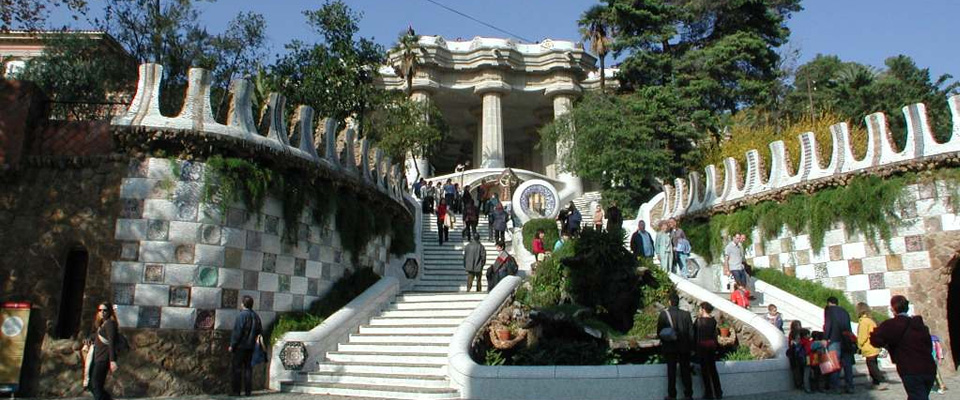| Barcelona City Tour: If you want to visit Barcelona at your own pace and with no hurry, the double-Decker tourist bus is your option! You can get on and off all day long, with the same ticket, you can change route and learn about the history of the city through a comfortable audio system with earphones, in 12 different languages. We present a map and guide with all the stops of each of the routes, and discounts for different establishments in the city. Our new buses are adapted for people with limited mobility and have an electric roof for use in the event of rain; they are fitted with anatomical seats and heating on both decks. They also have a stewardess aboard permanently. Now there are 2 routes: East and West. Frequency of buses at the stops varies depending on the season (between 8 and 15 minutes) and each route takes approximately 2 hours.
Park Güell: Is a garden complex with architectural elements situated on the hill of Barcelona. It was designed by the Catalan architect Antoni Gaudí. The greatest exponent of Catalan Modernism.You will not find any park like this one in the world! This architectural marvel, created by Antoni Gaudí in the middle of the nature, was commissioned by Count Güell, who wanted him to design an elegant estate with family homes. Now it’s a public park and it belongs to the city’s heritage, another marvel that awaits you on your visit to Barcelona. Don’t miss Park Güell: it will really surprise you! When you go to Park Güell, you should enter by the big staircase dominated by the dragon decorated with mosaic of ceramic tiles, the Catalan style known as trencadís, one of the most characteristic images of Barcelona. Originally written Park Güell (using the English spelling), it is arranged around a large central square bordered by a snaking, trencadís-covered bench. Below the square, the roof is supported by 86 Doric columns, like trees, with paths between them, and viaducts on sloping columns: Gaudí’s work unites nature and architecture. Park Guell also has a small house in the park which Gaudi lived in at one stage. The house has now been converted into a museum and contains interesting furniture also designed by Gaudi. |


